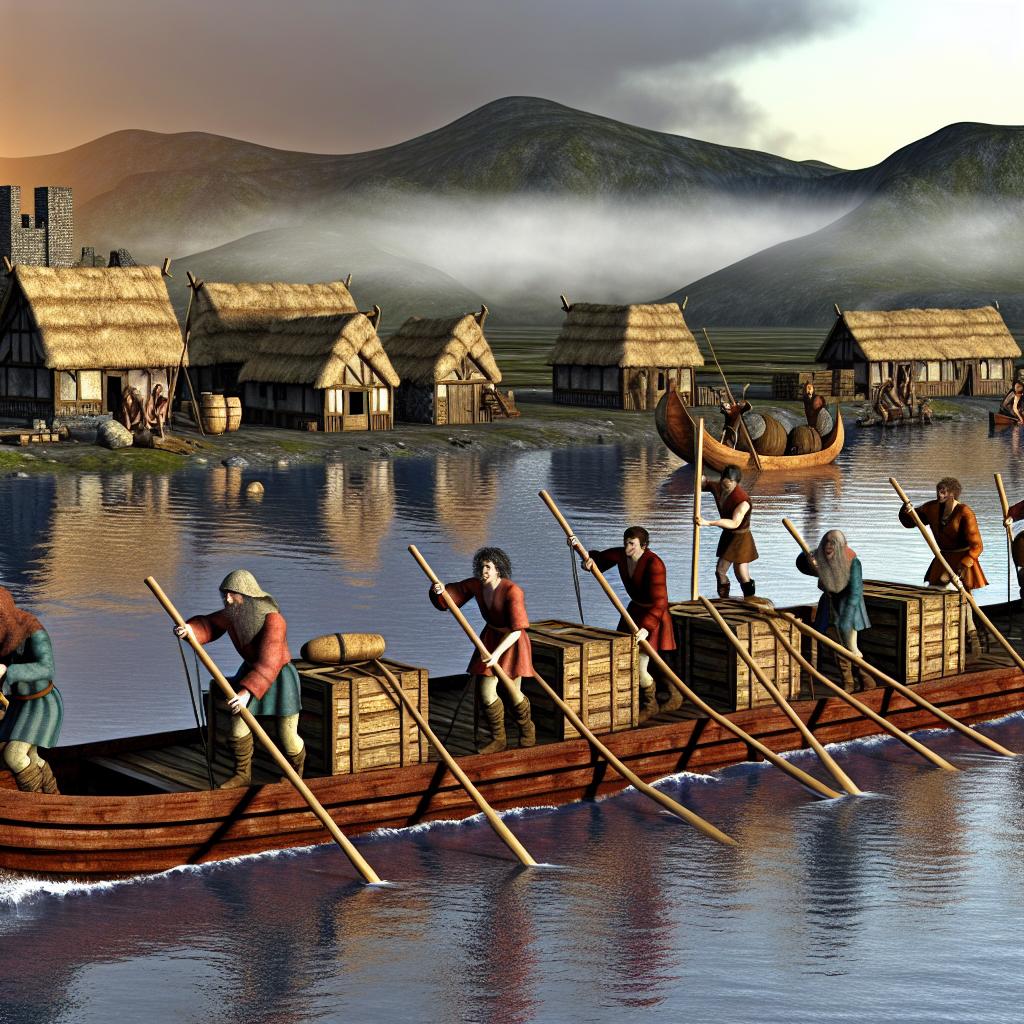The Role of Lakes in Medieval Transportation
During the medieval period, lakes played a vital role in transportation and commerce. As natural pathways through otherwise rugged or densely forested regions, they provided communities with vital access to trade routes and resources. The use of lakes for transportation facilitated economic growth and cultural exchange in various parts of the world.
Geographical Significance
Medieval Europe’s diverse geography included numerous lakes that significantly impacted trade and food supply. These lakes served as efficient natural highways for the transportation of goods and people, often bridging vast regions that would otherwise be isolated due to sparse road infrastructure. Some lakes, due to their strategic location, acted as junctions for trade routes. Notably, lakes in the Nordic regions, such as Lake Mälaren in Sweden, were central to connecting inland settlements to the Baltic Sea, thereby engaging in the wider network of Hanseatic trade. By serving as hubs of connectivity, these lakes enabled the exchange of goods ranging from agricultural produce to precious metals.
In Eastern Europe, the extensive use of lakes and rivers facilitated trade between the Byzantines and the regions along the Volga Route. This trade route was pivotal in linking the Byzantine Empire with distant markets, allowing cultural and material exchanges that influenced societies along the way. The strategic position of lakes in this region was not only vital for trade but also offered political and military advantages. Settlements near such lakes could control crucial water passages, providing leverage in regional power dynamics.
Transport and Navigation Techniques
In the medieval era, boat technology varied significantly depending on regional needs and available resources. The innovations and adaptations in boat construction were determined by the nature of the waters they traversed—be it expansive lakes or narrower riverine paths. In Scandinavian lands, where lakes were abundant, people developed longships and smaller vessels for inland waters. These boats were light, versatile, and enabled both trade and raids. The design of longships, known for their speed and agility, exemplified the Vikings’ mastery in navigation and maritime craft.
In contrast, in regions like the British Isles, the use of rudimentary coracles, or skin-boats, was prevalent for traversing smaller lakes and rivers. These simple yet effective craft reflected the local ecological constraints and resource availability, emphasizing the adaptive ingenuity of medieval communities. The evolution of boat-making techniques had a profound impact on the ability to conduct trade and maintain communication across regions separated by water bodies.
Commercial and Economic Impact
The availability of lake networks enabled effective trade and resource distribution, significantly affecting medieval economies. Lakes acted as hubs for exchanging goods such as fish, timber, and iron ore. The abundance of natural resources found in regions surrounding lakes ensured a steady supply of tradeable goods, which, in turn, sustained local economies and contributed to the prosperity of the broader medieval trade network.
Access to lakes reduced the time and cost of transporting goods, contributing to flourishing local economies and helping remote settlements connect with larger markets. For instance, products like furs, honey, and wax, sourced from remote northern regions, could be transported swiftly to populous centers, enhancing economic integration.
Furthermore, these water networks often provided opportunities for the development of towns and cities along their edges. Strategic settlements emerged near key lakes, often boasting marketplaces and vibrant communities that facilitated the exchange of ideas and technology. The establishment of such trade-centric urban centers led to increased labor specialization and economic diversification, ultimately contributing to the rise of prosperous societal hubs that became influential players in medieval geopolitics.
Transport Challenges and Solutions
While lakes provided numerous benefits for transportation, they also posed challenges. Navigating them required knowledge of local weather, seasonal water levels, and potential hazards like ice formation. Medieval sailors and merchants needed skills in both boat construction and navigation. The unpredictability of climate and water conditions necessitated the development of navigational tools and methods tailored to specific environments.
Furthermore, the use of lakes as transportation hubs demanded innovation to address fluctuations in water levels. Floating docks, innovative anchoring systems, and seasonal adjustments in trade schedules were some of the solutions employed to maintain efficiency. Communities had to adapt to the natural rhythm of the lakes, using ingenious practices such as constructing seasonal warehouses and employing flexible construction materials to withstand environmental changes.
For more on the impact of geographical features on medieval trade, visit this resource.
In summary, lakes played a crucial role in medieval transportation by providing necessary routes for trade and communication. They connected isolated areas to larger trade networks, facilitated economic growth, and became focal points for developing communities. Despite the challenges faced, medieval societies adeptly harnessed lakes for their transportation needs, capitalizing on their strategic importance to foster interactions and integration among diverse regions. The legacy of these water networks persisted, influencing subsequent transportation innovations and economic transformations into the modern era.
